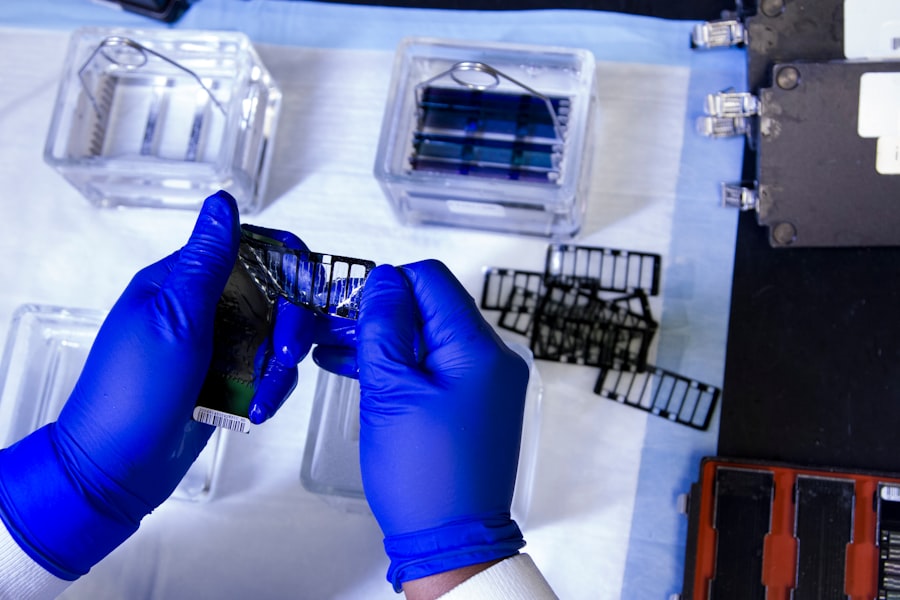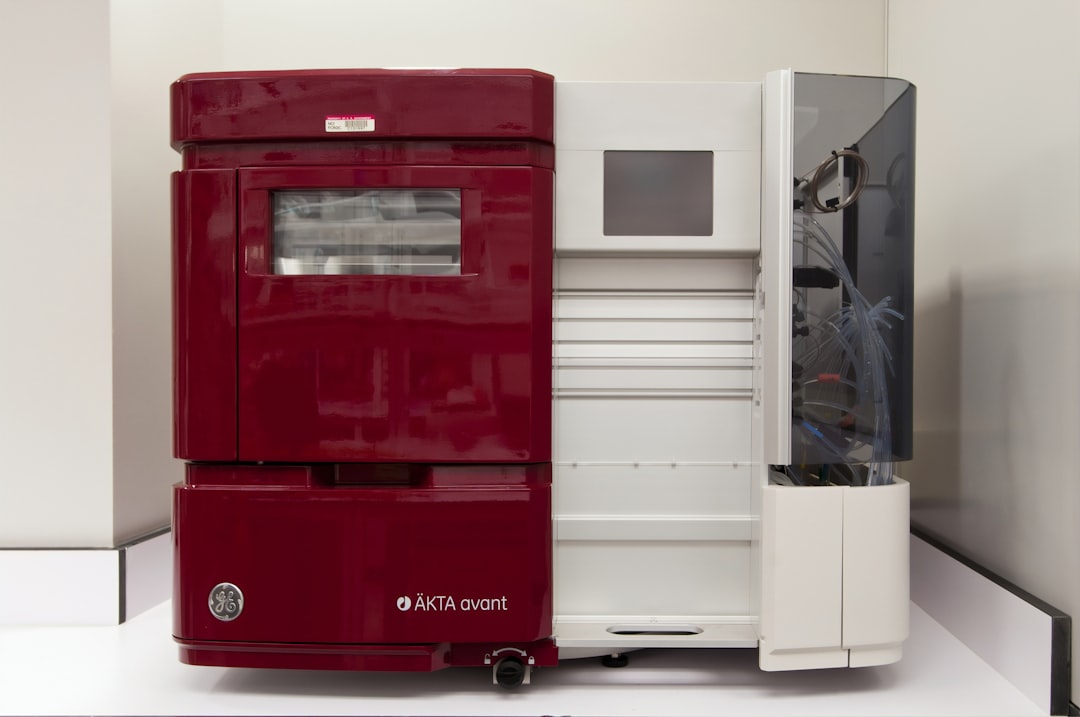Life testing serves as a crucial methodology in various fields, particularly in engineering, product development, and quality assurance. The primary objective of life testing is to evaluate the longevity and reliability of a product or system under specific conditions. By simulating real-world usage scenarios, life testing helps identify potential failure modes and assesses how long a product can perform its intended function before it deteriorates or fails.
This process is essential for manufacturers and developers who aim to ensure that their products meet safety standards and customer expectations. Moreover, life testing provides valuable insights into the performance characteristics of materials and components over time. For instance, in the automotive industry, life testing can reveal how different materials respond to stress, temperature fluctuations, and environmental factors.
This information is vital for engineers who must select appropriate materials that can withstand the rigors of daily use. Additionally, life testing can inform design improvements, allowing companies to enhance product durability and reliability based on empirical data rather than assumptions.
Key Takeaways
- Life testing helps to ensure the reliability and durability of products in real-world conditions
- Factors to consider before conducting life testing include the intended use of the product, customer expectations, and regulatory requirements
- Identifying critical components for life testing involves understanding the potential failure modes and the impact on product performance
- Determining the appropriate test conditions requires consideration of environmental factors, usage patterns, and potential stressors
- Establishing the duration of life testing involves balancing the need for accurate results with time and resource constraints
Factors to Consider Before Conducting Life Testing
Before embarking on a life testing program, several critical factors must be taken into account to ensure the validity and relevance of the results. One of the foremost considerations is the specific objectives of the testing. Organizations must clearly define what they hope to achieve through life testing—whether it is to assess product lifespan, identify failure mechanisms, or validate design changes.
A well-defined objective will guide the entire testing process, from selecting appropriate methodologies to interpreting results. Another significant factor is the selection of representative test samples. The samples chosen for life testing should accurately reflect the production variations and conditions that the final product will encounter in real-world applications.
This includes considering different manufacturing processes, material batches, and environmental conditions. If the test samples do not represent the actual products that will be used by consumers, the results may not be applicable or useful for making informed decisions about product improvements or market readiness.
Identifying Critical Components for Life Testing

Identifying which components of a product require life testing is a pivotal step in the overall process. Not all components contribute equally to a product’s performance or longevity; therefore, prioritizing critical components is essential. For example, in electronic devices, components such as capacitors, resistors, and integrated circuits often have varying lifespans and failure rates.
By focusing on these critical elements, engineers can gain insights into potential points of failure that could compromise the entire system. In addition to prioritizing components based on their importance to functionality, it is also necessary to consider their interactions with other parts of the system. Some components may not fail in isolation but could lead to cascading failures when combined with others.
For instance, in mechanical systems, a bearing might wear out faster if it is paired with a misaligned shaft. Understanding these interdependencies allows for a more comprehensive approach to life testing, ensuring that all relevant factors are considered when evaluating product reliability.
Determining the Appropriate Test Conditions
| Test Conditions | Metrics |
|---|---|
| Temperature | Measured in Celsius or Fahrenheit |
| Humidity | Measured in percentage |
| Pressure | Measured in Pascals or PSI |
| Time of Day | Measured in hours and minutes |
The conditions under which life testing is conducted play a significant role in the accuracy and applicability of the results. It is essential to replicate real-world usage scenarios as closely as possible to ensure that the findings are relevant. This includes factors such as temperature, humidity, vibration, and load conditions.
For example, if a product is designed for outdoor use, it should be tested under varying weather conditions to assess its durability against rain, snow, and extreme temperatures. Additionally, the duration of exposure to these conditions must be carefully considered. Short-term tests may not provide an accurate representation of long-term performance.
Therefore, establishing a realistic timeline that reflects typical usage patterns is crucial. In some cases, accelerated life testing methods can be employed to simulate prolonged exposure in a shorter timeframe; however, these methods must be validated to ensure that they accurately predict real-world performance.
Establishing the Duration of Life Testing
The duration of life testing is a critical aspect that directly influences the reliability of the results obtained. Determining how long to conduct tests requires a balance between practical constraints and the need for comprehensive data. For many products, especially those expected to have long lifespans, extended testing periods may be necessary to capture potential failure modes that could occur over time.
For instance, consumer electronics may require several months or even years of testing to ensure that they can withstand prolonged use without degradation.
These methods involve subjecting products to extreme conditions—such as elevated temperatures or increased loads—to simulate years of wear in a matter of weeks or months.
However, it is essential to correlate accelerated test results with real-world performance accurately. This correlation often requires extensive validation studies to ensure that findings from accelerated tests are applicable to standard usage scenarios.
Analyzing the Cost and Resources for Life Testing

Conducting life testing can be resource-intensive, requiring careful consideration of both financial and human resources. Organizations must evaluate their budgets and determine how much they are willing to invest in life testing programs. Costs can vary significantly based on factors such as the complexity of the tests, the number of samples required, and the duration of testing.
For instance, high-tech products may necessitate sophisticated equipment and specialized personnel, leading to increased expenses. In addition to direct costs, organizations should also consider opportunity costs associated with life testing. Time spent on extensive testing could delay product launches or other critical development activities.
Therefore, it is essential to weigh the potential benefits of thorough life testing against these opportunity costs. In some cases, companies may choose to conduct preliminary tests before committing to more extensive evaluations, allowing them to gather initial data without incurring significant expenses upfront.
Interpreting and Utilizing Life Test Results
Once life testing has been completed, interpreting the results accurately is paramount for making informed decisions about product design and development. The data collected during testing must be analyzed in relation to predefined objectives and criteria established at the outset of the process. This analysis often involves statistical methods to determine failure rates, mean time between failures (MTBF), and other key performance indicators that provide insights into product reliability.
Furthermore, it is essential to communicate findings effectively across teams within an organization. Engineers, designers, and marketing professionals must understand the implications of test results to align their efforts toward improving product quality and customer satisfaction. For example, if life test results indicate a high failure rate for a specific component under certain conditions, design teams may need to explore alternative materials or configurations that enhance durability.
Implementing Changes Based on Life Test Findings
The ultimate goal of life testing is not merely to gather data but to implement meaningful changes based on those findings.
This could involve redesigning components, selecting more robust materials, or altering manufacturing processes to enhance overall reliability.
Moreover, implementing changes based on life test findings should be viewed as an iterative process rather than a one-time event. Continuous improvement practices encourage organizations to regularly revisit their products and testing methodologies as new technologies emerge and consumer expectations evolve. By fostering a culture of innovation and responsiveness to test results, companies can maintain their competitive edge while ensuring that their products consistently meet high standards of quality and performance.
FAQs
What is a life test for a part?
A life test for a part is a method used to determine the reliability and durability of a component by subjecting it to various stressors and conditions over a period of time to simulate its expected lifespan in real-world usage.
Why is it important to decide if a part needs a life test?
Deciding if a part needs a life test is important to ensure the reliability and safety of the component in its intended application. It helps to identify potential failure modes and assess the longevity of the part under different operating conditions.
What factors should be considered when deciding if a part needs a life test?
Factors to consider when deciding if a part needs a life test include the criticality of the part in the system, the potential consequences of failure, the expected operating conditions, the material and design of the part, and any regulatory or industry standards that may apply.
How is the decision made to conduct a life test on a part?
The decision to conduct a life test on a part is typically made through a comprehensive analysis of the factors mentioned earlier, along with input from engineering, quality, and reliability teams. This decision may also be influenced by historical data, customer requirements, and industry best practices.
What are the common methods used for life testing parts?
Common methods for life testing parts include accelerated life testing, environmental stress screening, HALT (Highly Accelerated Life Testing), HASS (Highly Accelerated Stress Screening), and various other reliability testing techniques tailored to the specific characteristics of the part and its intended application.




